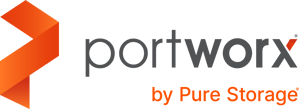Webinar
Think About Your Audience Before Choosing a Webinar Title

Sponsored by:

What You’ll Learn in This Webinar
The evolution of systems resource virtualization has definitively pivoted toward cloud-native application development and deployment. We see the evidence in the growth of stateful applications and services running in Kubernetes environments such as Red Hat OpenShift. Still, many traditional applications are not easily containerized. Supporting multiple platforms based on both virtual machines and containers is cumbersome and does not lend itself well to application modernization efforts currently supported by many organizations.
Red Hat OpenShift Virtualization, based on the KubeVirt project, addresses this challenge by providing virtual machine infrastructure within Kubernetes clusters. This means that organizations can easily run applications in virtual machines alongside applications in containers, taking advantage of a common user experience and allowing organizations to rehost, refactor, redeploy or rebuild applications if and when they are ready as part of their app modernization efforts.
But what about data management? Stateful applications in Kubernetes require persistent storage and critical applications require business continuity. In this Techstrong Learning Experience, we'll demonstrate how the Portworx Platform simplifies, optimizes and automates data management for applications running in both containers and virtual machines in Red Hat OpenShift. The live demo will show how easy it is to manage storage for both environments through a single-pane experience.
You'll learn:
- How Red Hat OpenShift delivers a common platform and user experience for applications running in containers.
- How to leverage Red Hat OpenShift Virtualization to rehost non-containerized applications in virtual machines within the same clusters as their containerized apps. This requires a common data management platform to persist state and deliver Kubernetes data services to critical applications.
- How Portworx provides full cluster data management services for applications running in both containers and virtual machines in Red Hat OpenShift.







